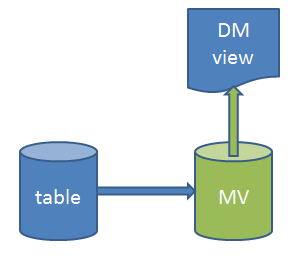
An Information Source supports two data access types - Online and Data Mart access. The Data Mart version is based on snapshot tables that contains calculated and derived data. Originally it was only possible to implement snapshot tables by using Materialized Views in the Oracle database. The Data Mart framework has been extended to also support incremental load of Information Sources. Incremental loading can be performed for dimensions as well as for facts but the facts are the main targets since the fact definitions are often rather complex and they also represent transactional data. Introducing incremental load possibilities gives a very big advantage compared to the solution based on Materialized Views; except for the first/initial load it will be possible to only recalculate data related to a small sub set of all available transactions and thus enhancing the refresh time considerably. The solution based on Materialized Views only handles complete refresh.
The Data Mart framework based on Materialized Views can be visualized as follows:

Figure 1: Data Mart access based on Materialized View
The extended Data Mart framework supporting incremental load can be visualized as follows:
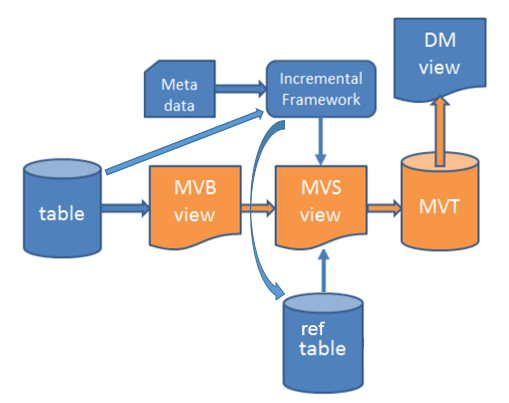
Figure 2: Data Mart access based on incremental load
The framework for incremental load supports the following functionality:
Some words about the Data Mart based on incremental load.
The following refresh options are available:
Some considerations when creating objects related to incremental load:
The MVB is the main view that that represents how to retrieve the data related to the entity. The more complex the view is, the risk for bad performance is increasing. Always try to make the view as efficient as possible. If possible, avoid function calls. It is sometimes possible to replace the function calls with ordinary joins.
The MVB view normally contains one column less than the MVS view and the MVT table. The MVS view and the MVT table should have matching columns. The Online view for the entity should define more or less the same columns as in the MVB view.
Data that is dependent on the current user should not be stored in the snapshot (MVT) table. The solution is to move retrieval of translation specific values to the Data Mart view.
The general principle used by the framework will be explained in this section.
Assume that we have a Fact where the associated access views are retrieving
information mainly from the tables CUSTOMER_ORDER_TAB and
CUSTOMER_ORDER_LINE_TAB. Analyzing the Fact views, e.g. the function
calls, leads to that there are two more tables that are involved when retrieving
the Fact information; CUST_ORDER_LINE_TAX_LINES_TAB and
CUST_ORDER_LINE_DISCOUNT_TAB.
A structure describing the table dependencies must be defined. For the
example case it is possible to define two structures. The first alternative is
to use the following structure: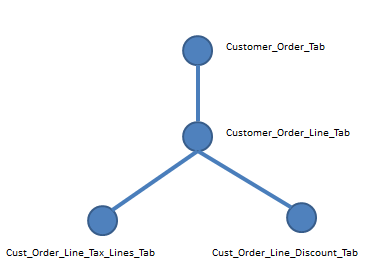
Figure 3: Table dependency structure - alternative 1
In this alternative the table CUSTOMER_ORDER_TAB has been
defined as the top table. CUSTMER_ORDER_LINE_TAB is a child table
to CUSTOMER_ORDER_TAB but at the same time acts as a parent for the
other two tables. The framework will keep track of changes in all four tables
and propagate the changes up in the dependency hierarchy. The end result will be
a collection of keys in the top most table, i.e. order numbers in table
CUSTOMER_ORDER_TAB, that defines the orders affected by changes on all
levels.
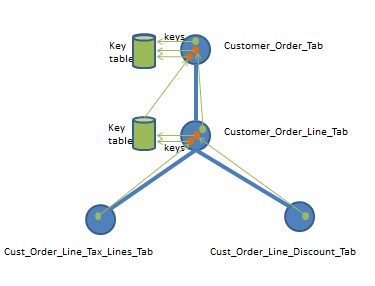
Figure 4: Table change handling - alternative 1
Changes are in the above model handled as follows:
CUST_ORDER_LINE_TAX_LINES_TAB leads to
that related keys in the parent table CUSTOMER_ORDER_LINE_TAB
are collected in a key table, say ColKeyTab.CUST_ORDER_LINE_DISCOUNT_TAB leads to that
related keys in the parent table CUSTOMER_ORDER_LINE_TAB are
collected in key table ColKeyTabCUSTOMER_ORDER_LINE_TAB leads to that
related keys in the parent table CUSTOMER_ORDER_TAB are
collected in a key table, say CoKeyTabCUSTOMER_ORDER_LINE_TAB related
key table ColKeyTab leads to that related keys in the parent table
CUSTOMER_ORDER_TAB are collected in key table CoKeyTab.CUSTOMER_ORDER_TAB leads to that keys in
this table are collected in key table CoKeyTab
The second alternative is to create a dependency structure as below:
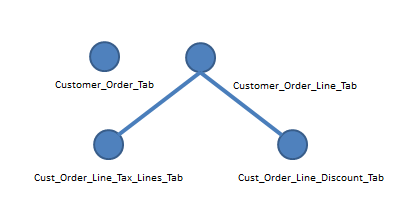
Figure 5: Table dependency structure - alternative 2
In this alternative the tables CUSTOMER_ORDER_TAB and
CUSTMER_ORDER_LINE_TAB have been defined as top level tables. The
framework will keep track of changes in all four tables and propagate the
changes up in the dependency hierarchy. The end result will be a collection of
keys related to CUSTOMER_ORDER_TAB and CUSTMER_ORDER_LINE_TAB.
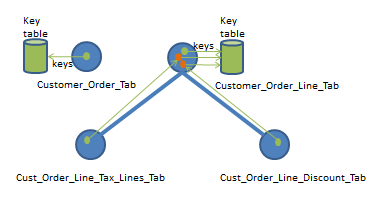
Figure 6: Table change handling - alternative 2
Changes are in the above model handled as follows:
CUST_ORDER_LINE_TAX_LINES_TAB leads to
that related keys in the parent table CUSTOMER_ORDER_LINE_TAB
are collected in a key table, say ColKeyTab.CUST_ORDER_LINE_DISCOUNT_TAB leads to that
related keys in the parent table CUSTOMER_ORDER_LINE_TAB are
collected in key table ColKeyTabCUSTOMER_ORDER_LINE_TAB leads to that keys in
this table are collected in key table ColKeyTabCUSTOMER_ORDER_TAB leads to that keys in
this table are collected in a key table, say CoKeyTab
In general the second alternative is to prefer since it will reduce number of affected records compared to the first alternative.
How to develop support for incremental load is described in section Incremental Load Development as part of the IFS Applications development guide.